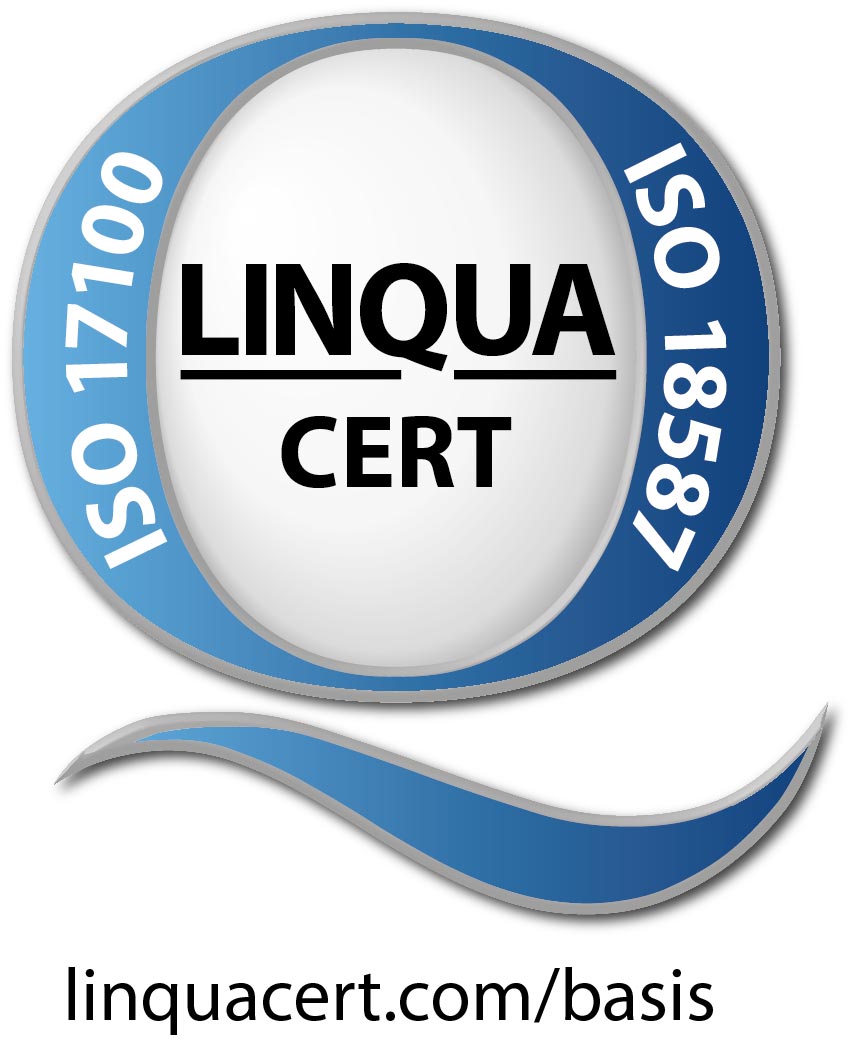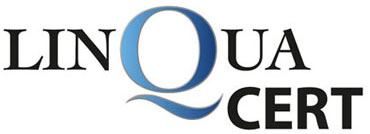Information about LinquaCert certifications
With immediate effect, the new LinquaCert certifications now contain an Internet link that clearly describes the respective test criteria. This gives interested parties even more information about the test content.

If you use our quality symbol for consumer advertising, we strongly recommend that you only use the new LinquaCert quality symbol with this link. Otherwise, you may receive a warning from consumer protection authorities or be admonished by third parties for violating competition law (UWG).
If you use certification marks that do not include this link, please ensure that www.linquacert.com/base is used as a reference.
test content
Certification:
Management system certification/voluntary audit.
Examination basis:
International standard ISO 17100 and ISO 18587.
(Requirements for translation services as well as requirements for post-editing of machine translations).
Standard Legislation:
ISO International Organization for Standardization.
What do the ISO 17100 and ISO 18587 standards include?
These two standards define the requirements for the certifiable process management of companies. These include, among others:
You can reach us by phone on +41 44 552 66 19 or send an email to Mr. Markus Kukla, head of the certification body. We look forward to hearing from you!
Test criteria
The company has established appropriate procedures for the provision of services. The company analyzes and respects the quality requirements of its customers and those of the standards.
The company has undergone a voluntary audit (on-site audit) based on defined criteria (audit specifications).
A certificate and / or permission to use the quality symbol is only granted if there are no significant deviations from the requirements of the test basis in the course of the test itself.
Certificates and/or quality symbols are issued for a limited time. You can check the validity of individual certificates on the LinquaCert "Current Certificates" page.
Annual, announced audits that lead to positive results must be carried out for certification.
Occasionally, unannounced audits may take place.
ISO 17100 / ISO 18587 are not product certifications. A statement about the quality of a translation provided by the certified customer can therefore not be made.
ISO 17100 and/or ISO 18587 certification cannot guarantee error-free work, although that is the goal.
With our summary of the most important test criteria, you and your customers are on the safe side.
This creates transparency and you can always refer to which requirements you have met with your certificate. Your customers get quick and easy access to this page with a link and can get an overview of what the most important content of the certification is and what the basis for these ISO standards is. As a certified translation service provider, you also protect yourself legally because you can refer to us as a recognized certifier.

Further content of the certification
At ISO 17000
Existing resources:
Which translators are used, what specialist qualifications do they have, what experience can they demonstrate
Editors:
Who edits and corrects the texts?
Project management:
How is the project management involved and what are their tasks?
Subcontractors:
What qualifications do third parties working on the projects have?
Technical infrastructure:
Which software is used?
How is IT security guaranteed?
Production preparation:
How are inquiries answered and offers made?
What are the processes for project preparation and specification?
Production:
Detailed review of the processes for translation, editing, technical review, proofreading and approval
Production post-processing:
How is customer feedback processed and what and final management processes are in place?

At ISO 18587
Here, too, the preparation, the actual processing and the follow-up are examined separately and the individual steps are checked for conformity with the ISO standard 18587.
The competencies relate to the general qualifications of the LSP (Language Service Provider), the technical qualifications of the translators and the professionalism of the service.
The workflow and the quality of the existing processes are important for certification. Project management is the focus. The audit includes, among other things:
- Identification of key requirements and project specifications during the pre-production process
- Follow procedures and specifications throughout production
- Supervision of the preparation process for the translation project
- Assignment of one or more competent translators to the translation project
- Appointment of one or more competent auditors
- Dissemination of information, giving instructions in the context of the order
- Verification that the translation service's specifications have been met before the translation is approved and released to the client.
